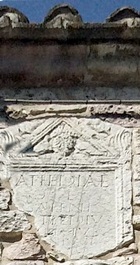

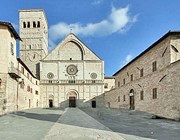
Palazzo dei Canonici della Cattedrale
to the right of San Rufino
The earliest surviving references to a the presence of canons in Assisi date to 1029, when they were associated with both Santa Maria Maggiore and San Rufino. Bishop Ugone rebuilt San Rufino at about this time and, by 1035, it had replaced Santa Maria Maggiore as the cathedral of Assisi. Bishop Ugone moved from a residence on the site of the present Palazzo Vescovile to a new one next to San Rufino at this time. The bishops of Assisi shared it with the Canons of San Rufino until ca. 1082, when they returned to Palazzo Vescovile.
Relations between Prior Raniero (ca. 1127-51) and Bishop Clarissimo (1126-34) seem to have been difficult, and Raniero went so far as to claim the right to ordain priests in his own right. Bishop Clarissimo seems to have obtained papal backing for the canonical position, which insisted on the episcopal prerogative in this area. It is notable that, in 1140, it was Prior Raniero who commissioned the present church of San Rufino. By 1295, the community had fallen into decay, and Pope Boniface VIII felt it necessary to remind the canons of their commitment to communal life and liturgical service.
The present Palazzo dei Canonici della Cattedrale dates to the 17th century.
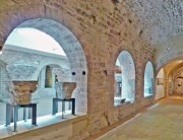
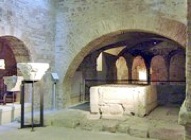
Recent excavations have uncovered parts of the original structure that now house the Museo Diocesano, including;
-
✴the remains of the cloister; and
-
✴the well known as il Pozzo della Mensa, which is some 35 meters deep.
Roman reliefs in the facade
Relief of a Knight (2nd half of the 1st century BC)

The inscription (CIL XI 5472) commemorates him as Ner(o) Egnati(us), son of T(itus). This is one of three surviving inscriptions that relate to the gens Egnatia. The other two, and a cast of this one (Exhibit 168), are in the Museo Civico.
Early Seviri (7 BC)
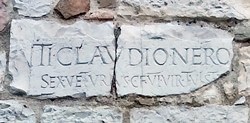
This fragmentary inscription (CIL XI 5424) to the left of the lower lefthand window
, which is dated to the consulate of Tiberius and Gnaeus Calpurnius Piso (i.e. 7 BC), commemorates two men, one of whom was a seviri (member of a magistracy of six men):
-
✴Sextus Veturius, son of Caius, VIvir; and
-
✴Titus Vistinius Vitor.
We know from a less fragmentary inscription (AE 1989 0290) in Santa Chiara, in which the first two lines are identical, that the inscription originally named all six seviri, together with two other individuals (presumably quattuorviri or aediles), and that they had undertaken a public project of some kind, probably the paving of a road, that had been decreed by the decurions. These two inscriptions constitute the earliest securely dated records of this magistracy (although a college of four magistri Augustales was commemorated at Nepet in 13 BC).
Atieda (2nd half of the 1st century AD)
